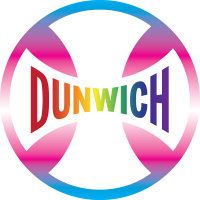What are some good typefaces you like to reference and serve as a general guide?

Adam Ladd
Posts: 285
[Edit: Started a new post with hopefully more clarity and may delete this one shortly. Better explained in the messages further down]
This is subjective and all kinds of genres out there, but I'm wondering which typeface(s) might be considered a good candidate for the most "neutral". Not just in aesthetic look/feel (like a Helvetica), but in core construction of the characters.
In other words, one that seems to have the most widely acceptable forms for all standard, extended latin glyphs.
Open to hearing whether it's a sans, serif, etc. But generally are ones that have the least dispute amongst its shapes (e.g. avoids strange eszett, or quirky /g, etc.).
This is subjective and all kinds of genres out there, but I'm wondering which typeface(s) might be considered a good candidate for the most "neutral". Not just in aesthetic look/feel (like a Helvetica), but in core construction of the characters.
In other words, one that seems to have the most widely acceptable forms for all standard, extended latin glyphs.
Open to hearing whether it's a sans, serif, etc. But generally are ones that have the least dispute amongst its shapes (e.g. avoids strange eszett, or quirky /g, etc.).
Don't expect any perfect answer, but ones that could be considered good reference/control.
0
Comments
-
you might want to start here: https://carvalho-bernau.com/neutral/
0 -
How big of an extended Latin character set are you thinking of? Fontlab on Steroids Latin or Brill and Noto?0
-
Might be best to get away from the word “neutral,” then and just say well-formed shapes or something.
What character set is your concept of “extended Latin” here? For example, Adobe has three character sets that might qualify (Adobe Latin 3, 4 and 5, which last I checked were about 331, 619 and 1307/1747 glyphs, depending on how you count).
So, how extended and in exactly what ways? Even at a rough level. I would assume that includes CE/EE Latin languages such as Polish, Hungarian, Turkish, Romanian, Latvian, etc. Does it include Vietnamese? What about less commonly supported Latin languages beyond those?
0 -
From neutral, one may select several gears, including reverse.
Therefore, a big family—sans, serif, condensed, extended. Clean/rough.
This is getting into variable territory.0 -
Sorry, yes this is a bit cumbersome to express. "Neutral" may not have been the best choice of words.
Agree, "well-formed shapes" or widely recognized as most "acceptable" or "appropriate" might be better. Like, if you were going to teach someone about core characters and their "standard" or expected design construction, what are some good typefaces you like to reference.
For extended Latin character set: didn't have in mind to be too widespread (so doesn't need to include Vietnamese). Something similar to Underware's Latin Plus, though some characters maybe aren't relevant https://www.underware.nl/latin_plus/
0 -
1
-
Underware’s Latin Plus looks pretty similar to Adobe Latin 3 and Google Fonts Latin Core. All of them have about 320–350 characters and handle Latin for European languages including Central/Eastern European. Character sets like this are really common. Adobe Latin 3 is the minimum in Adobe-developed fonts with “Pro” in the name, for the last 25 years or so.
So you can find literally thousands of fonts with this character set.
Some that I especially respect the designs of would include Minion 3 and Brill for serifed faces (both of which go far beyond the character set mentioned above).1 -
Thanks for expanding on that Thomas. The suggestions you made for those two typefaces you respect helps (though, yes, a much larger character set).
So suggestions like what you mentioned is what I'm looking for, because they seem well constructed and can be considered a good or reliable design to refer to with how they drew the characters (then a type designer can interpret it how they want in their own design, but at least have a good "control" reference to help not stray too far).0 -
Depending on the writing system and character, sometimes there is more than one valid approach to a given character. Which one you should use? It depends.
For Latin, for example, the lowercase a and g each have two valid forms and typically you pick one. Similarly the Cyrillic de and el. Many such things can each benefit from a short essay or discussion. Another example of “commentary is helpful” is understanding how the ß (German eszett) differs from the Greek beta and options for how it is drawn. Or for the shape of the cap eszett, for that matter!1 -
Adam Ladd said:Agree, "well-formed shapes" or widely recognized as most "acceptable" or "appropriate" might be better. Like, if you were going to teach someone about core characters and their "standard" or expected design construction, what are some good typefaces you like to reference.This makes your meaning more clear, and it helps to make it possible to give you an answer.Although it helps to make an answer possible, I don't think it makes the answer obvious or easy. Candidates do come to mind, however.What typeface would be considered to represent... the canonical form of the Latin alphabet?One could suggest one of the most popular typefaces - Times Roman or Helvetica, for example.Something that is popular but also nondescript might be considered better - Century Expanded comes to mind.But maybe one should look for an ur-form of Roman type. Trajan is caps only, so that's out. But here a version of Jenson, such as Eusebius, comes to mind. Or Caslon.(EDIT: I forgot to mention the Romain du Roi, due to its geometrical design construction, as another type of possibility.)Each of these possibilities has its merits in answering your question, and the one you prefer from among them would help to narrow down what your question really is.It's possible, though, that I've completely missed a category which would supply the best answer to your question. For example, maybe something by Goudy that best exemplifies a typeface based on the principles of calligraphy is the answer you seek - I'll let someone with more expertise suggest which of his many typefaces - or perhaps one by someone else - would be a candidate answer of that kind.And I'm just scratching the surface. If you think the answer is something like Jenson, but you're not satisfied with it, maybe an Aldine like Bembo or Griffo is what you seek. In the vicinity of Caslon, you might choose Garamond or Baskerville instead. This suggests, though, that maybe your question is unanswerable, because any typeface that's recognized as being a very good one - subject to some broad constraints, like not being a specialized display typeface - would be a possible answer.And it has occurred to me that I can ask a "stupid question" that illustrates a possible problem with your question. If there was one typeface that had this property: the more another typeface looks like it, the better it is, so it is the most ideal model to hold up for emulation - then why on Earth are there any other typefaces but that one? Since different typefaces serve different purposes, though, this question can be answered - even if one typeface is, say, the best designed, so it's the best example to show to students (one of the possibilities for what you're looking for), it may not be the best typeface for, say, highway signage.I guess my point is now clear. Answering your question is going to require a lot of thought, and after a study of a number of typefaces and typography in general, despite the progress you've made in defining your question, it may still be that you will have to be the one to do that thought.I could be facile, though, and say that Kennerley Old Style by Frederic Goudy (for example) is probably as good an answer to your question as any other typeface, as I understand your question.But I ignored one thing you mentioned, that you were interested in a typeface that addressed extended Latin glyphs. If that consideration were paramount, I'd point you at Google Roboto and IBM Plex.1
-
Adam Ladd said:Sorry, yes this is a bit cumbersome to express. "Neutral" may not have been the best choice of words.
Agree, "well-formed shapes" or widely recognized as most "acceptable" or "appropriate" might be better. Like, if you were going to teach someone about core characters and their "standard" or expected design construction, what are some good typefaces you like to reference.It is more clear now but still ...Anyways, most advanced in terms of legibility I'd say are Times New Roman and Century Old Style. So I definitely consider them as "reference" fonts. But how "appropriate" or "expected" ... I think it is an emotional aspect.Obviously they are very popular and widespread, so I think it fits here as well.Regarding quirky characters - punctuation in Times, especially in math and programming code feels a bit off, Century does better job here. Should I call Times' punctuation quirky though, I don't know, but it could be better.
0
Categories
- All Categories
- 46 Introductions
- 3.9K Typeface Design
- 487 Type Design Critiques
- 564 Type Design Software
- 1.1K Type Design Technique & Theory
- 656 Type Business
- 861 Font Technology
- 29 Punchcutting
- 521 Typography
- 119 Type Education
- 325 Type History
- 77 Type Resources
- 112 Lettering and Calligraphy
- 33 Lettering Critiques
- 79 Lettering Technique & Theory
- 559 Announcements
- 94 Events
- 114 Job Postings
- 170 Type Releases
- 180 Miscellaneous News
- 276 About TypeDrawers
- 54 TypeDrawers Announcements
- 120 Suggestions and Bug Reports




